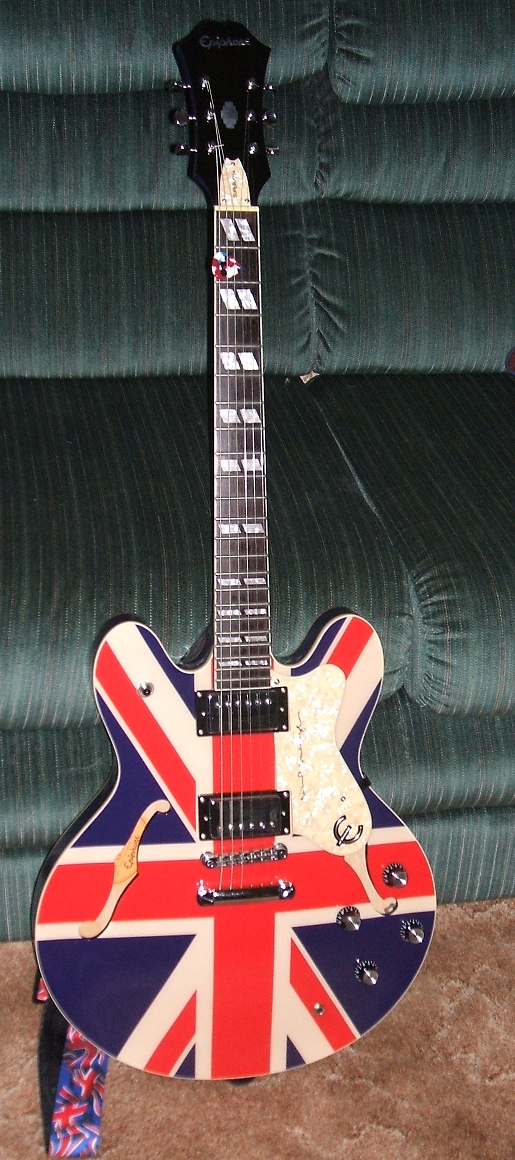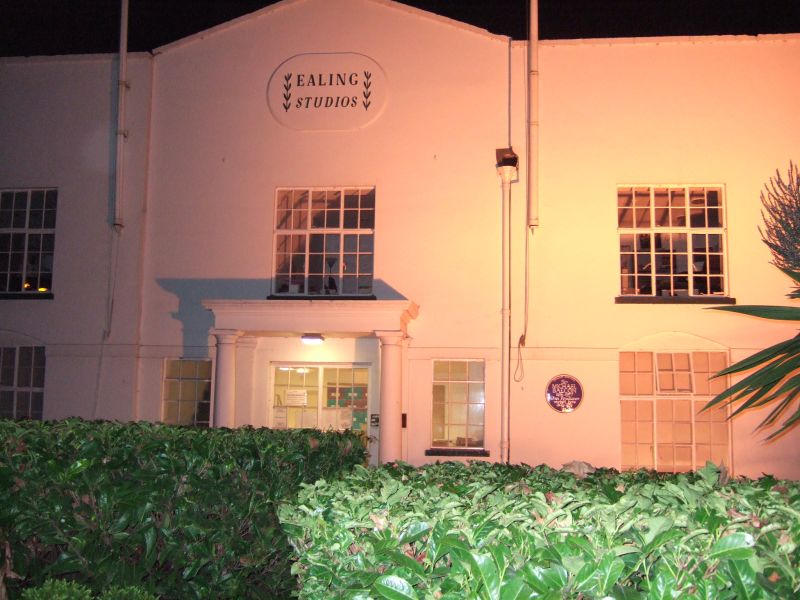|
Champagne Supernova
"Champagne Supernova" is a song by English rock band Oasis, written by Noel Gallagher. It is the closing track on the band's second studio album, '' (What's the Story) Morning Glory?'' (1995), and was released as the sixth and final single from the album in Australia, France, and New Zealand on 13 May 1996. The Jam frontman Paul Weller appears as a guest guitarist and backing vocalist on the track. A music video for the song, directed by Nigel Dick, was released in 1996. The single was not released in the UK. The song was released in the United States as a radio single, becoming the band's second 1 single on the Modern Rock Tracks chart. It also peaked at No. 20 on the ''Billboard'' Hot 100 Airplay, becoming the band's third top 40 single on that chart. The song is included on the band's greatest hits album '' Stop the Clocks'' and on the US release of '' Time Flies... 1994–2009''. Supernova SN 2003fg was nicknamed "Champagne Supernova" after the song. Background Noel Galla ... [...More Info...] [...Related Items...] OR: [Wikipedia] [Google] [Baidu] |
Oasis (band)
Oasis were an English rock band formed in Manchester in 1991. Originally known as the Rain, the group initially consisted of Liam Gallagher (lead vocals, tambourine), Paul Arthurs (guitar), Paul McGuigan (bass guitar) and Tony McCarroll (drums). Liam's older brother Noel (lead guitar, vocals) later joined as a fifth member, finalising the group's core lineup. During the course of their existence, they had various lineup changes, with the Gallagher brothers remaining the only staple members. Oasis signed to independent record label Creation Records in 1993 and released their record-setting debut album ''Definitely Maybe'' (1994). The following year they recorded '' (What's the Story) Morning Glory?'' (1995) with drummer Alan White, in the midst of a chart rivalry with peers Blur. Spending ten weeks at number one on the UK Albums Chart, ''(What's the Story) Morning Glory?'' was also an international chart success and became one of the best-selling albums of all time. In addi ... [...More Info...] [...Related Items...] OR: [Wikipedia] [Google] [Baidu] |
SN 2003fg
SN 2003fg, nicknamed the Champagne Supernova, was an unusual Type Ia supernova. It was discovered in 2003, with the Canada-France-Hawaii Telescope and the Keck Telescope, both on Mauna Kea in Hawaii, and announced by researchers at the University of Toronto. The supernova occurred in a galaxy some 4 billion light-years from Earth. It was nicknamed after the 1995 song "Champagne Supernova" by English rock band Oasis. It was unusual because of the mass of its progenitor. According to the current understanding, white dwarf stars explode as Type Ia supernovas when their mass approaches 1.4 solar masses, termed the Chandrasekhar limit. The mass added to the star is believed to be donated by a companion star, either from the companion's stellar wind or the overflow of its Roche lobe as it evolves. However, the progenitor of SN 2003fg reached two solar masses before exploding. The primary mechanism invoked to explain how a white dwarf can exceed the Chandrasekhar mass is unusua ... [...More Info...] [...Related Items...] OR: [Wikipedia] [Google] [Baidu] |
There And Then '' and ''there are''
{{disambiguation ...
There may refer to: * ''There'' (film), a 2009 Turkish film (Turkish title: ''Orada'') * ''There'' (virtual world) *''there'', a deictic adverb in English *''there'', an English pronoun used in phrases such as ''there is English grammar is the set of structural rules of the English language. This includes the structure of words, phrases, clauses, sentences, and whole texts. This article describes a generalized, present-day Standard English – a form of speech an ... [...More Info...] [...Related Items...] OR: [Wikipedia] [Google] [Baidu] |
Ealing Studios
Ealing Studios is a television and film production company and facilities provider at Ealing Green in West London. Will Barker bought the White Lodge on Ealing Green in 1902 as a base for film making, and films have been made on the site ever since. It is the oldest continuously working studio facility for film production in the world, and the current stages were opened for the use of sound in 1931. It is best known for a series of classic films produced in the post-WWII years, including ''Kind Hearts and Coronets'' (1949), ''Passport to Pimlico'' (1949), ''The Lavender Hill Mob'' (1951), and '' The Ladykillers'' (1955). The BBC owned and filmed at the Studios for forty years from 1955 until 1995. Since 2000, Ealing Studios has resumed releasing films under its own name, including the revived ''St Trinian's'' franchise. In more recent times, films shot here include ''The Importance of Being Earnest'' (2002) and ''Shaun of the Dead'' (2004), as well as '' The Theory of Everyth ... [...More Info...] [...Related Items...] OR: [Wikipedia] [Google] [Baidu] |
Music Video
A music video is a video of variable duration, that integrates a music song or a music album with imagery that is produced for promotion (marketing), promotional or musical artistic purposes. Modern music videos are primarily made and used as a music marketing device intended to promote the sale of Music Recording, music recordings. Although the origins of music videos date back to musical short, musical short films that first appeared, they again came into prominence when Paramount Global's MTV based its format around the medium. These kinds of videos were described by various terms including "illustrated song", "filmed insert", "promotional (promo) film", "promotional clip", "promotional video", "song video", "song clip", "film clip" or simply "video". Music videos use a wide range of styles and contemporary video-making techniques, including animation, live action, live-action, documentary film, documentary, and non-narrative approaches such as Non-narrative film, abstract fi ... [...More Info...] [...Related Items...] OR: [Wikipedia] [Google] [Baidu] |
Power Ballad
A sentimental ballad is an emotional style of music that often deals with romantic and intimate relationships, and to a lesser extent, loneliness, death, war, drug abuse, politics and religion, usually in a poignant but solemn manner.J. M. Curtis, ''Rock Eras: Interpretations of Music and Society, 1954-1984'' (Popular Press, 1987), p. 236. Ballads are generally melodic enough to get the listener's attention. Sentimental ballads are found in most music genres, such as pop, R&B, soul, country, folk, rock and electronic music. Usually slow in tempo, ballads tend to have a lush musical arrangement which emphasizes the song's melody and harmonies. Characteristically, ballads use acoustic instruments such as guitars, pianos, saxophones, and sometimes an orchestral set. Many modern mainstream ballads tend to feature synthesizers, drum machines and even, to some extent, a dance rhythm. Sentimental ballads had their origins in the early Tin Pan Alley music industry of the la ... [...More Info...] [...Related Items...] OR: [Wikipedia] [Google] [Baidu] |
Wonderwall (song)
"Wonderwall" is a song by English rock band Oasis. It was written by Noel Gallagher. The song was produced by Gallagher and Owen Morris for the band's second studio album ''(What's the Story) Morning Glory?'', released in 1995. According to Gallagher, "Wonderwall" describes "an imaginary friend who's gonna come and save you from yourself". The song was released as the fourth single from the album on 30 October 1995. "Wonderwall" topped the charts in Australia and New Zealand and reached the top 10 in 13 other counties, including Canada and the United States at 5 and No. 8, respectively, as well as No. 2 on both the UK Singles Chart and the Irish Singles Chart. The single was certified sextuple platinum by the British Phonographic Industry and gold by the Recording Industry Association of America. It remains one of the band's most popular songs, and was voted No. 1 on the Australian alternative music radio station Triple J's "20 Years of the Hottest 100" in 2013. Many artists ha ... [...More Info...] [...Related Items...] OR: [Wikipedia] [Google] [Baidu] |
Cashbox (magazine)
''Cashbox'', also known as ''Cash Box'', was an American music industry trade magazine, originally published weekly from July 1942 to November 1996. Ten years after its dissolution, it was revived and continues as ''Cashbox Magazine'', an online magazine with weekly charts and occasional special print issues. In addition to the music industry, the magazine covered the amusement arcade industry, including jukebox machines and arcade games. History Print edition charts (1952–1996) ''Cashbox'' was one of several magazines that published record charts in the United States. Its most prominent competitors were '' Billboard'' and '' Record World'' (known as ''Music Vendor'' prior to April 1964). Unlike ''Billboard'', ''Cashbox'' combined all currently available recordings of a song into one chart position with artist and label information shown for each version, alphabetized by label. Originally, no indication of which version was the biggest seller was given, but from October 25, 1 ... [...More Info...] [...Related Items...] OR: [Wikipedia] [Google] [Baidu] |
Trumpton
''Trumpton'' is a British stop-motion children's television series from the producers of ''Camberwick Green''. First shown on the BBC from January to March 1967, it was the second series in the Trumptonshire, ''Trumptonshire'' trilogy, which comprised ''Camberwick Green'', ''Trumpton'' and ''Chigley''. As with the other two series, ''Trumpton'' continued to be repeated well in to the 1980s as a part of the BBC's children's schedules. ''Trumpton'' was narrated by Brian Cant, and animation was by Bob Bura, John Hardwick and Pasquale Ferrari. Scripts were by Alison Prince; all other production details were identical to ''Camberwick Green''. Story and structure The action takes place in the fictional town of Trumpton, a short distance from the equally fictional village of Camberwick Green, the focus of the first series in the ''Trumptonshire Trilogy''. Each episode begins with a shot of Trumpton Town Hall clock: The townsfolk then appear going about their daily business: the mayor ... [...More Info...] [...Related Items...] OR: [Wikipedia] [Google] [Baidu] |
Camberwick Green
''Camberwick Green'' is a British children's television series that ran from January to March 1966 on BBC1, featuring stop motion puppets. ''Camberwick Green'' is the first in the ''Trumptonshire'' trilogy, which also includes ''Trumpton'' and ''Chigley''. Background The series was written and produced by Gordon Murray and animated by Bob Bura, John Hardwick and Pasquale Ferrari. Music was by Freddie Phillips while narration and song vocals were provided by Brian Cant. There are thirteen fifteen-minute colour episodes produced by ''Gordon Murray Pictures''. The inspiration for the name is believed to have stemmed from the East Sussex village of Wivelsfield Green, supported by the nearby villages of Plumpton (Trumpton) and Chailey (Chigley). Each episode begins with a shot of a musical box which rotates while playing a tune. It is accompanied by the following narration: Then the lid, a hexagon constructed of six triangles in alternating colours, slowly opens up like an iris ... [...More Info...] [...Related Items...] OR: [Wikipedia] [Google] [Baidu] |
Madchester
Madchester was a musical and cultural scene that developed in the English city of Manchester in the late 1980s, closely associated with the indie dance scene. Indie-dance (sometimes referred to as indie-rave) saw artists merging indie music with elements of acid house, psychedelia and 1960s pop. The term Madchester was coined by Factory Records' Tony Wilson, with the label popularised by the British music press in the early 1990s, and its most famous groups include the Stone Roses, Happy Mondays, Inspiral Carpets, the Charlatans, James and 808 State. It is widely seen as being heavily influenced by drugs, especially MDMA. At that time, the Haçienda nightclub, co-owned by members of New Order, was a major catalyst for the distinctive musical ethos in the city that was called the Second Summer of Love. Pre-Madchester The music scene in Manchester immediately before the Madchester era had been dominated by The Smiths, New Order, and The Fall, who were to become a significa ... [...More Info...] [...Related Items...] OR: [Wikipedia] [Google] [Baidu] |


.jpg)
